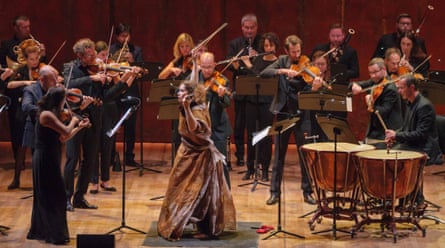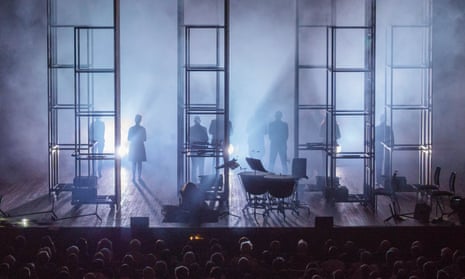Describing themselves as a “nomadic collective of passionate musicians”, the Mahler Chamber Orchestra match perfectly the restless questing of violinist Patricia Kopatchinskaja. Their explosive creative chemistry made their two Aldeburgh festival concerts riveting. The MCO, led by Meesun Hong Coleman, had already showed their calibre in Bartók’s Divertimento for Strings and in Stravinsky’s suite from The Soldier’s Tale when Kopatchinskaja joined them for the Ligeti concerto. Her mission is to demystify contemporary music by making links with the past and here she led a ghostly rendering of a 14th-century Kyrie by Machaut to connect with Ligeti’s use of the medieval hocket (in which a melody is divided between parts). It was telling and underlined the life force in Kopatchinskaja’s playing.

That notion of going backwards to move forward was then taken literally in the second concert, Bye Bye Beethoven. One by one, musicians walked backwards on to the darkened Maltings platform while video projections showed clock hands and the second sweep going in reverse. Ives’s The Unanswered Question opened a non-chronological sequence of Haydn, Cage, Bach and Kurtág before the copper kettle drums, placed front centre stage, announced the opening beats of Beethoven’s Violin Concerto.
Kopatchinskaja, her look transformed ivia an elaborate robing ritual, also transformed phrases usually heard with soloistic bravado into meditative statements. But she can move from serenity to a whirlwind of energy and drama in a turn of the head or the stamp of her bare feet. Her cadenza incited first the cellos and double basses, then the timpanist and finally Hong Coleman in furious combat. Tension was ratcheted to the maximum in the finale: as the backdrop, constructed of massive copper panels, moved forward to invade their space, the musicians stopped, throwing down their stands. Left alone, the soloist continued a now wild distortion of Beethoven with the timpanist banging a defiant fusillade against the panels. Theatrical smoke everywhere, this was Vienna.
Though not in the same starry league, the Piatti Quartet espoused the same cause in their Orford concert. Between Haydn and Beethoven were quartets by Emily Howard and Simon Holt, the latter’s new Cloud House fittingly musing on time and decay.

Comments (…)
Sign in or create your Guardian account to join the discussion